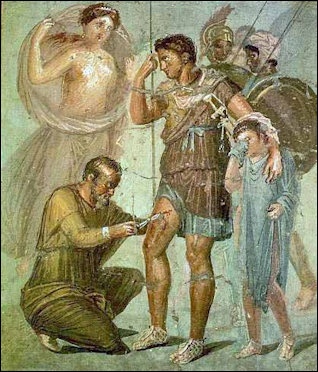The practice of first aid has deep historical roots, particularly in the context of warfare, where the need for immediate medical care became crucial. Evidence of this can be traced back to ancient civilizations, highlighting the importance of treating injuries sustained in battle.
Ancient Greece and Rome

One of the earliest representations of wound care can be found on Classical Greek pottery dating back to around 500 BC. These artifacts often depict scenes of warriors receiving care for their injuries, reflecting a society that understood the necessity of medical attention in combat.
In Roman times, the organization of medical care within the military was more structured. The Roman army had designated roles for medical assistance, such as the capsarii, who were responsible for bandaging and treating wounds. This role can be seen as a precursor to the modern combat medic. The Roman military also established a network of surgeons, field ambulances, and hospitals, enabling them to efficiently manage the high volume of injuries incurred during battles.
The Knights Hospitaller

Moving forward to the 11th century AD, the Knights Hospitaller emerged as a significant force in providing medical care. Initially formed to assist pilgrims in the Holy Land, they quickly expanded their services to care for knights and soldiers. Their commitment to medical care during wartime set a precedent for the integration of first aid in military operations.
Conclusion
Throughout history, the evolution of first aid practices in warfare underscores the essential role of medical care in protecting and preserving life on the battlefield. From the Greeks and Romans to the Knights Hospitaller, these early forms of first aid laid the foundation for the advanced medical protocols we see today in combat scenarios.
